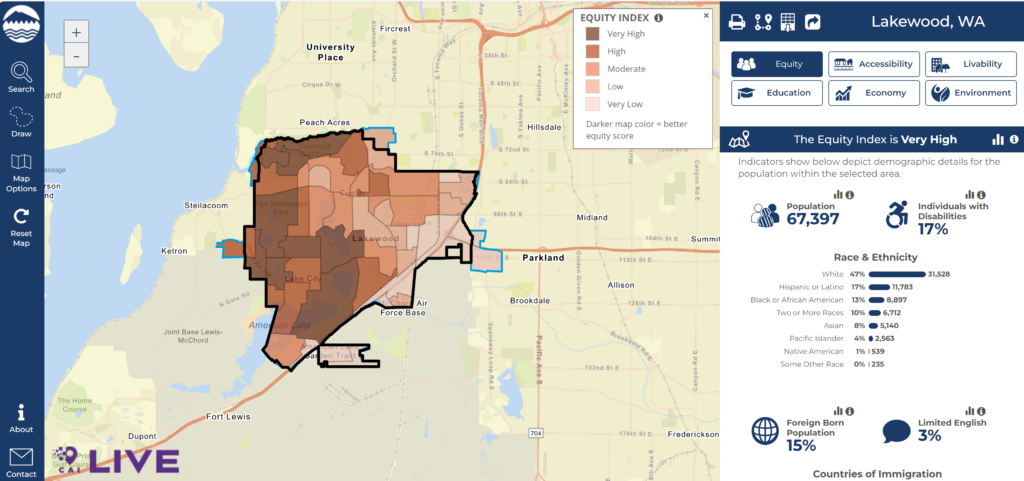Lakewood is home to nearly 64,200 residents (2023 estimate) and has one of the most culturally diverse populations in Washington. Lakewood is proud to be one of the few cities in the state with a majority, minority population. According to the 2020 U.S. Census, 54% of Lakewood residents identify as Black, Indigenous or people of color.
Race & Ethnicity
- White: 47% (31,528 people)
- Hispanic or Latino: 17% (11,783 people)
- Black or African American: 13% (8,897 people)
- Two or More Races: 10% (6,712 people)
- Asian: 8% (5,140 people)
- Pacific Islander: 4% (2,563 people)
- Native American: 1% (539 people)
- Some Other Race: 0% (235 people)
Data from the 2020 U.S. Census and American Community Survey (ACS).
Statement on Equity
Government policies have enduring effects on communities and demographics. The Lakewood City Council signed an equity statement in 2021 (PDF) to instill equity as a priority for the city and development of future policies.
The statement reflects the Lakewood City Council’s consideration of the influence of government on the wellbeing of diverse populations.
With its adoption, the Lakewood City Council committed to the following practices:
- Instilling equity as a priority of policy and the delivery of services.
- Enacting initiatives that support and celebrate the diversity of the community.
- Ensuring equity in municipal planning.
- Identifying and dismantling preconceived prejudices.
- Increasing sensitivity to social norms and cultural expectations.
- Pursuing justice and equity for all residents.
Diversity, Equity, Inclusion & Belonging Commitment Statement
Lakewood Represents.
- All people. All cultures. All identities.
- Valuing the differences that make us stronger.
- Focusing on empowerment, inclusivity and belonging.
- Building a diverse team to meet the unique needs of the community we serve.
- We are ALL IN.
Equity Index

Click the map to see the City of Lakewood’s Equity Index to learn more about the city, its neighborhoods and additional data available through resources like the U.S. Census.

